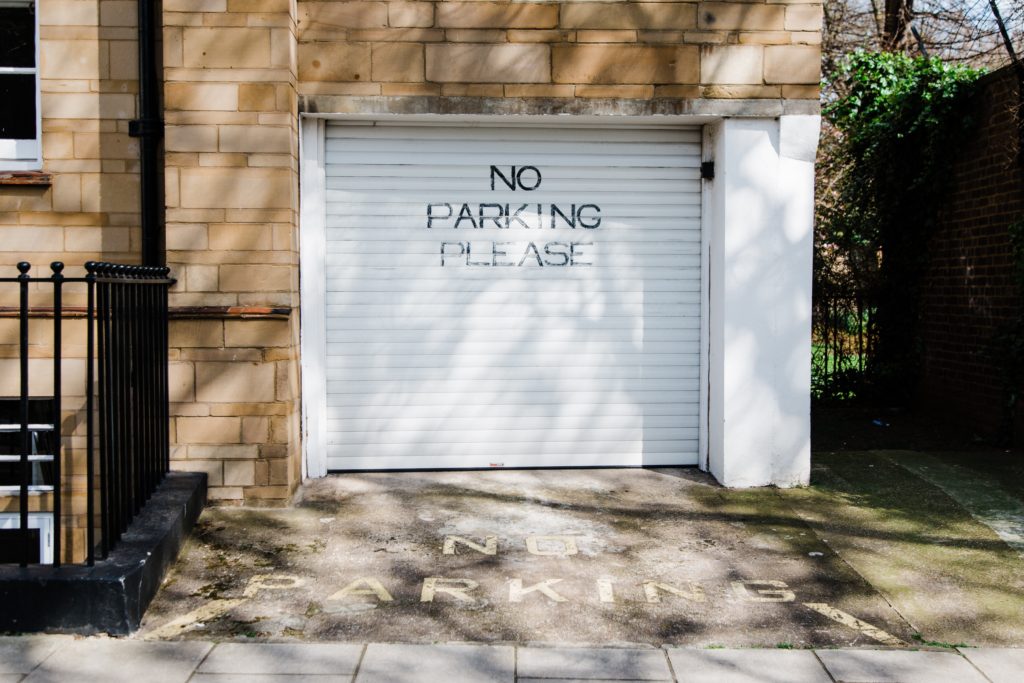For many of us, particularly city dwellers, off-street parking – if we have the opportunity ‑ is the Holy Grail. To turn the area in front of your property into a car park, you need a dropped kerb. Getting one, whether it’s you or your neighbour, depends on where you live and the location of your property. Read on to find out all about dropped kerbs.
Table of Contents
What is a dropped kerb?
This is when the existing kerb stone is removed and a ramp is put across the pavement ensuring a smooth transition between a property’s boundary and the road.
Dropped kerbs are a legal requirement for drivers who want to cross a pavement/footpath with a car to access their drive.
Is a dropped kerb difficult to get?
A council might judge it to be too dangerous if your newly created drive will mean pulling onto a busy A road. Or it may consider your property too close to a junction or pedestrian crossing.
If you do live next to a principal or classified road (A, B or C), you may need planning permission as well as local authority permission.
On some streets where there isn’t already off-street parking, councils don’t allow it. A dropped kerb might mean two parking spaces are lost when only one car will be removed from parking on the road.
And a council will need to be satisfied that the space you’ve earmarked for a drive will be big enough for a car. You can’t have the car overhanging and obstructing the pavement.

What is the law around dropped kerbs?
Parking a vehicle across a dropped kerb is a contravention and can be penalised by either police or local councils. This is included in the Highway Code (Rule 243).
It’s illegal because it blocks the footpath for wheelchair users, pedestrians and people with pushchairs, forcing them to take to the road which is clearly unsafe.
Highway Code Rule 243 states you do NOT stop “where the kerb has been lowered to help wheelchair users and powered mobility vehicles or in front of an entrance to a property.”
Parking in front of a driveway’s dropped kerb could result in a £90 penalty charge notice issued either by the local authority or in extreme cases, the police.
How to apply to drop a kerb
Unfortunately, there is no standard price. That depends on where you live in the country. Generally speaking, the richer the area, the more a council will charge for the privilege of dropping a kerb. Some will do it for free; some will charge more than £1500.
The result is it could set you back anywhere between £300 and £2000 for the whole job. This depends on how wide the section of pavement that needs dropping is and how much work you need to do on your own land between the building and pavement. And at the end of the process, you still don’t own the pavement; that remains the council’s property!
First apply for permission from the local authority (they own the pavements). There will be a charge for this which is non-refundable. It could be anywhere between £50 and £350. If the application is declined, you may get some of your money refunded. If it’s accepted, the application fee may go towards the total cost.
The council may let you choose from a list of approved contractors. Or it may specify a contractor that you must use.
The contractor should have access to the council’s drawings showing the location of pipes and cables. They will then remove the existing kerbstones and excavate the pavement into a ramp. Finally they’ll replace the kerbstones with the dropped kerb and tarmac it all.
Having the works done should take a day or two. Going through the application process could take months.
What about a neighbour extending a dropped kerb?
For someone to get a dropped kerb, they must have a valid reason. In some cases, there might be a lamppost between properties that would need moving. This would obviously add cost and complication to the application.
If the neighbour wants a dropped kerb so they can parallel parking in front of their house and driveway, there are a couple of reasons against this.
First, they’ll be blocking the pavement and therefore could be fined by the local authority. Second, as we’ve just said, the council is unlikely to give them permission for something that is clearly breaking the law.
The neighbour might argue that it’s their own dropped kerb, their drive they’re blocking and they should be able to park there. The authorities would argue that a fire engine might need access to the pavement or another kind of emergency vehicle might need the space to turn around in.
What else do you need to consider?
You’ll have to turn your front garden into a hard standing for vehicles. And that may mean removing trees and/or grass and soil. You may also have to take down an existing garden wall, fence or hedge. And you may want new gate posts and possibly gates.
Remember to factor in the cost of removing the debris for anything that needs taking off-site and think about drainage too. Some councils will insist that you have a porous surface to reduce the likelihood of contributing to localised flooding.
You can’t just build a dropped kerb. You will need to apply to your local authority for permission to put in or add to a dropped kerb. In some cases, you might need planning permission.
You need to do a fair amount of paperwork for the application and provide proper drawings based on accurate measurements. In addition you need to provide measurements of the driveway proving that no car parked on it is going to overhang the pavement.
Proximity to obstructions such as trees, road signs, parking bays or street lights will be a factor too.
You need to have a proper contractor with the right public liability insurance to do the work and you’ll need their details for the form.
Once you’ve paid the fee, the council will come to do a site assessment. Fingers crossed, after that you’ll get the go ahead for the work to start.

I’ve been writing about cars and motoring for more than 25 years. My career started on a long-departed classic car weekly magazine called AutoClassic. I’ve since pitched up at Autosport, Auto Express, the News of the World, Sunday Times and most recently the Daily Telegraph. When I’m not writing about cars and motoring, I’m probably doing some kind of sport or working in my garden.







